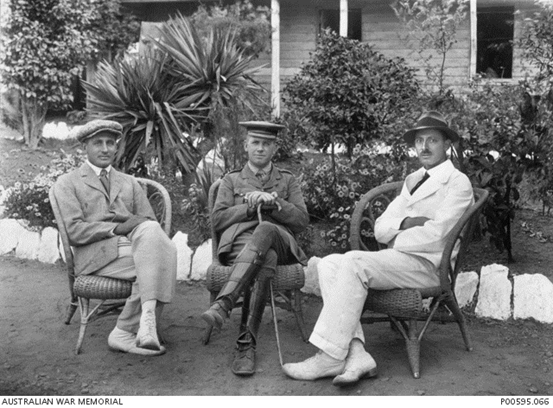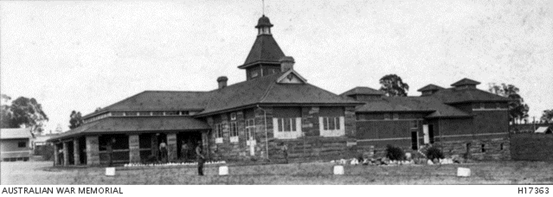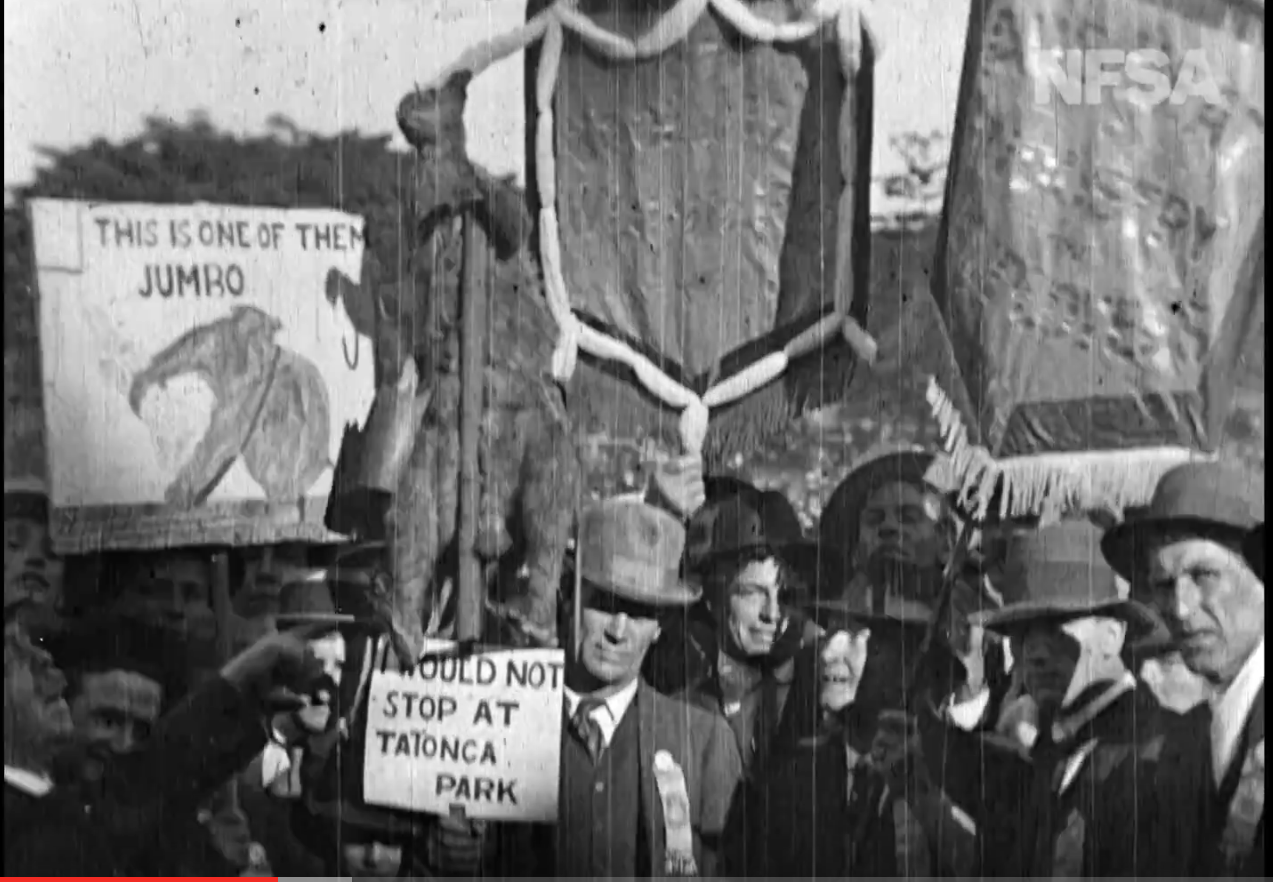
Portrait of Colonel Robert Sands (centre) and two permanent German officers captured in New Guinea, Captain von Klevitz and Lieutenant Meyer, c. 1916.
Robert was the grandson of John Sands who had established the successful Sydney printing company John Sands Pty Ltd in the 1840s. Robert was born in Sydney, educated at King’s School, Parramatta and at All Saints College, Bathurst.
After joining the Scottish Rifles in NSW as a bugler he quickly rose through the ranks. His skill in military matters, combined with a good business head, saw him hold responsible positions. He was Adjutant-quartermaster, and second in command of the 1st Australian Infantry Regiment, under General Holmes; he became A.D.C. to Governor –General Lord Northcote, liaison officer during the visit of the American Fleet and in 1914 was made Commandant of the concentration camps of Australasia. These included Trial Bay Goal and Holsworthy internment camps.

Holsworthy, New South Wales, c. 1916. The YMCA hall and guards’ canteen and the theatre at the German internment camp.
Promoted to Lieutenant Colonel in 1916 it is believed Robert was asked to undertake secret service work that involved travel, to a number of countries, until the end of the war. He was created a Chevalier of the Legion of Honour in 1924.
After the war Robert returned to John Sands Pty Ltd as Managing Director. In 1919 he moved into ‘Marmion’, 9 Silex Road, Mosman. This house had been designed by architect, Edwin Roy Orchard who was responsible for many Arts & Crafts houses in Clifton Gardens and Mosman.
 Screen shot of 1917 film reconstructed by National Film & Sound Archive experts https://www.nfsa.gov.au/latest/australias-great-strike-100-years. The protest placards make humorous reference to the strike-breakers residing at Taronga, decrying the Zoo’s use as strike-breakers camp.
Screen shot of 1917 film reconstructed by National Film & Sound Archive experts https://www.nfsa.gov.au/latest/australias-great-strike-100-years. The protest placards make humorous reference to the strike-breakers residing at Taronga, decrying the Zoo’s use as strike-breakers camp. Charles Bryant’s 1931 painting depicting the
Charles Bryant’s 1931 painting depicting the 

